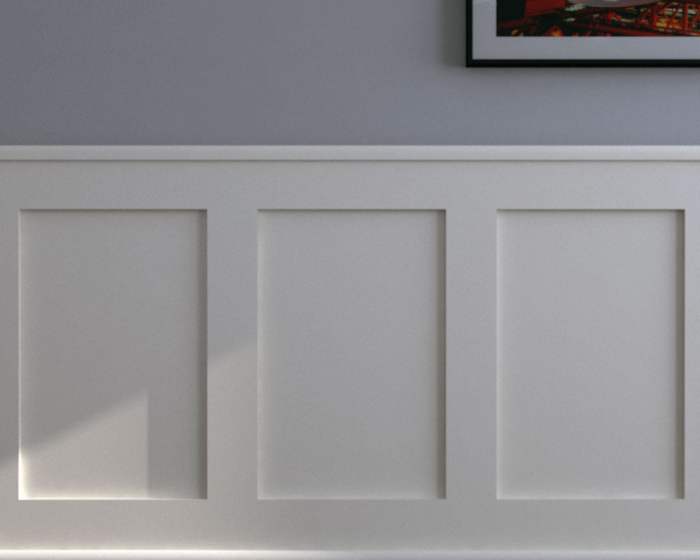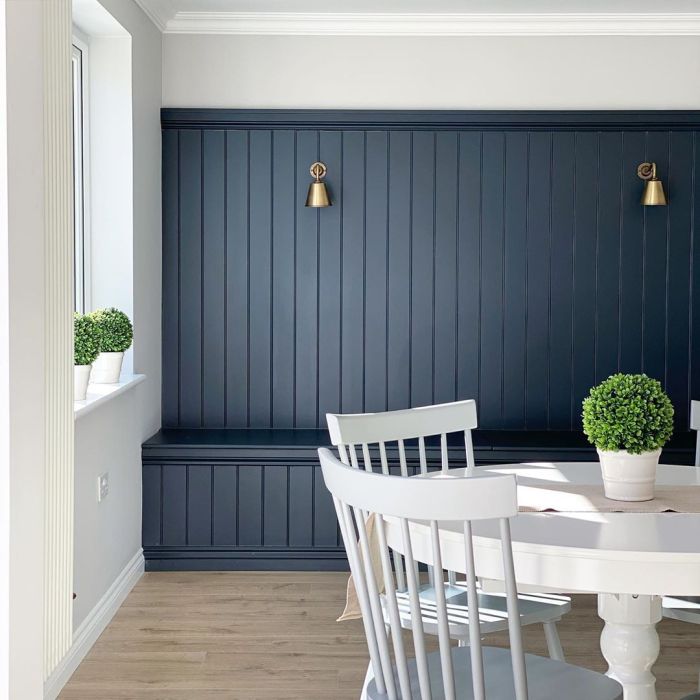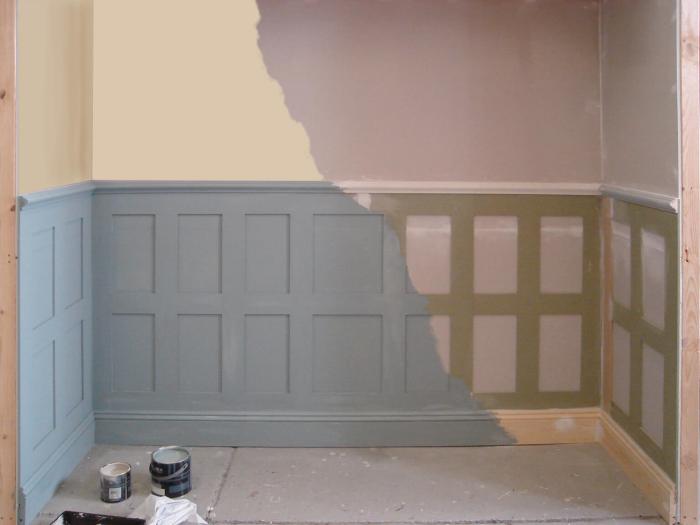Wall panelling ideas for hallways – When it comes to hallways, wall paneling is the ultimate game-changer. It’s not just about aesthetics; it’s about creating a space that’s both functional and visually stunning. Dive into a world of design ideas, material options, and installation techniques that will elevate your hallways to new heights.
From classic wood paneling to modern PVC, the material you choose sets the tone for your hallway’s ambiance. Explore the pros and cons of each option, considering durability, cost, and sustainability.
Design Ideas
Wall paneling can transform a hallway into an elegant and inviting space. From traditional to modern styles, there are endless design possibilities to suit any taste. Let’s explore some inspiring ideas.
Panel shapes and sizes vary widely. Rectangle panels are a classic choice, while square or chevron patterns add a touch of modernity. Experiment with different textures, such as wood, faux leather, or fabric, to create visual interest.
Color Schemes and Patterns
Color plays a crucial role in the overall look of the hallway. Neutral shades like white, beige, or gray create a timeless and sophisticated ambiance. Bold colors like navy or emerald green add drama and personality. Patterns, such as stripes or geometric designs, can further enhance the visual appeal.
Material Options

Choosing the right wall paneling material for your hallway is crucial for durability, cost, ease of installation, and aesthetics. Explore the pros and cons of wood, MDF, PVC, and fabric to make an informed decision.
Consider factors like durability, cost, ease of installation, environmental impact, and style when selecting the material. Each material offers unique advantages and drawbacks, so weigh your options carefully to find the best fit for your needs.
Wood
- Pros:Durable, natural beauty, warmth, can be painted or stained to match décor.
- Cons:Expensive, susceptible to moisture and pests, requires regular maintenance.
MDF
- Pros:Affordable, versatile, can be painted or laminated to mimic other materials.
- Cons:Less durable than wood, can be damaged by moisture, not environmentally friendly.
PVC
- Pros:Waterproof, durable, easy to clean, affordable.
- Cons:Can look artificial, limited design options, not as environmentally friendly as other materials.
Fabric
- Pros:Soft, warm, sound-absorbing, can create a cozy atmosphere.
- Cons:Not durable, difficult to clean, can fade or stain easily.
Installation Techniques
Installing wall panels in hallways involves meticulous attention to detail and precise execution. The process generally entails the following steps:1.
-
-*Preparation
Begin by ensuring the hallway walls are clean, dry, and free of any imperfections. If necessary, repair any cracks or holes to create a smooth surface for panel installation.
- 2.
- 3.
- 4.
- 5.
- 6.
-*Layout
Determine the layout and placement of the wall panels. Mark the desired locations on the wall using a pencil or chalk. Use a level to ensure the panels are aligned correctly.
-*Adhesive Application
Apply a generous amount of construction adhesive to the back of each panel. Use a notched trowel to evenly distribute the adhesive and create a strong bond.
-*Panel Placement
Carefully align the panels with the marked locations on the wall and press them firmly into place. Use a rubber mallet or tapping block to gently tap the panels until they are securely seated.
-*Nail or Screw Reinforcement
For added stability, consider using nails or screws to reinforce the panels. Drive nails or screws through the panels and into the wall studs, ensuring a secure hold.
-*Finishing Touches
Once the panels are installed, use caulk or sealant to fill any gaps between the panels and the wall. This will create a seamless and professional-looking finish.
By following these steps and using the appropriate materials, you can achieve a durable and aesthetically pleasing wall panel installation in your hallway.
Adhesive Selection
Choosing the right adhesive is crucial for a successful wall panel installation. Consider the following factors when selecting an adhesive:
-
-*Type of Wall Panels
Different types of wall panels may require specific adhesives designed for their particular materials.
-*Wall Surface
The condition and porosity of the wall surface can influence the adhesive’s effectiveness.
-*Environmental Conditions
Consider the temperature, humidity, and other environmental factors that may affect the adhesive’s performance.
Nail or Screw Selection
If you opt to use nails or screws for reinforcement, choose the appropriate type and size based on the following considerations:
-
-*Panel Thickness
The thickness of the wall panels will determine the length and diameter of the nails or screws required.
-*Wall Studs
Ensure the nails or screws are long enough to penetrate the wall studs for a secure hold.
-*Finish
Choose nails or screws with a finish that matches the color or style of the wall panels for a cohesive look.
Lighting Integration: Wall Panelling Ideas For Hallways

Lighting plays a crucial role in elevating wall paneling designs, transforming them from mere decorative elements into captivating focal points. By incorporating lighting, you can create ambiance, highlight architectural features, and enhance the overall visual impact of your hallway.
There’s a wide range of lighting options available to complement wall paneling, each with its unique aesthetic and functional benefits.
Recessed Lighting
Recessed lights are seamlessly integrated into the ceiling, providing ambient illumination without distracting from the wall paneling. They’re ideal for creating a subtle, even glow that showcases the textures and patterns of the panels.
Wall Scones
Wall sconces offer a more focused and directional light source. Mounted directly on the wall, they can highlight specific areas of the paneling, creating a dramatic effect. Choose sconces with intricate designs to complement the style of the panels.
Chandeliers
For a grand and opulent look, consider installing a chandelier in your hallway. The cascading light from a chandelier will create a breathtaking ambiance, reflecting off the wall panels and illuminating the space with a touch of glamour.
Example: Ambiance and Architectural Features
In a contemporary hallway, recessed lighting provides a soft, ambient glow that emphasizes the sleek lines and geometric patterns of the wood paneling. Wall sconces with frosted glass shades are strategically placed to highlight the intricate carvings on the panels, creating a warm and inviting atmosphere.
Decorative Elements
Incorporate decorative elements into wall paneling designs to create unique and personalized hallway spaces.
Moldings, trims, and hardware can add visual interest and depth to the paneling.
Moldings
- Crown molding adds a touch of elegance and can help to define the ceiling line.
- Base molding conceals the joint between the wall and floor, adding a finished look.
- Chair rail molding creates a visual separation between the upper and lower walls, adding character and style.
Trims
- Picture frame molding can be used to create a focal point around artwork or mirrors.
- Panel molding can be used to create a grid pattern on the wall, adding depth and dimension.
- Rope molding adds a touch of texture and interest to the paneling.
Hardware
- Wall hooks and coat racks provide both functionality and style.
- Drawer pulls and knobs can add a touch of personality to built-in storage.
- Light fixtures can be mounted on the wall paneling, creating a warm and inviting ambiance.
Functional Considerations

Wall paneling in hallways not only enhances aesthetics but also serves practical purposes.
One significant advantage is soundproofing. Hallways can be noisy areas, especially in homes with multiple occupants or pets. Wall paneling with sound-absorbing materials, such as acoustic panels or cork, can effectively reduce noise levels, creating a more peaceful environment.
Insulation
Wall paneling can also contribute to insulation, helping to regulate temperature in hallways. Insulated panels with foam or fiberglass cores can prevent heat loss in winter and reduce heat gain in summer, resulting in energy savings.
Storage
Hallways can often be tight on space. Wall paneling can provide a clever solution by incorporating storage options. Panels with built-in shelves, drawers, or hooks can keep clutter at bay, maximizing storage without compromising style.
Concealment
Another functional aspect of wall paneling is its ability to conceal unsightly elements. Panels can be used to cover wires, pipes, or other infrastructure, creating a clean and organized appearance.
Hallway Types
When considering wall paneling ideas for hallways, it’s crucial to take into account the specific type of hallway you have. Different types of hallways, such as narrow, wide, or curved hallways, require unique design approaches to optimize space and create a welcoming atmosphere.
For narrow hallways, it’s best to use light-colored panels that reflect light and make the space feel larger. Vertical paneling can also help create the illusion of height, making the hallway feel less cramped. Consider using mirrors or reflective surfaces to further enhance the sense of spaciousness.
Wide Hallways, Wall panelling ideas for hallways
Wide hallways offer more design flexibility. You can experiment with bolder colors and patterns to create a dramatic effect. Horizontal paneling can help widen the space visually, while vertical paneling can add height. Consider incorporating built-in storage or seating to maximize functionality.
Curved Hallways
Curved hallways present a unique challenge. It’s important to choose panels that can be easily curved to fit the shape of the hallway. Flexible materials like fabric or leather can be a good option. Consider using different colors or textures to create a dynamic and visually interesting effect.
DIY vs. Professional Installation
Installing wall panels yourself can be a cost-effective option, but it’s essential to consider your skills and the complexity of the project. If you’re comfortable with DIY projects and have the necessary tools, attempting installation yourself may be feasible. However, for intricate designs or if you lack experience, hiring a professional is advisable.
When DIY Installation is Appropriate
* Simple designs with basic panel shapes and sizes
- Small-scale projects with limited wall space
- Projects where precision and accuracy are not crucial
- When you have the necessary tools and materials
Finding Qualified Contractors
* Get referrals from friends, family, or neighbors
- Check online reviews and ratings
- Interview potential contractors and ask about their experience, licensing, and insurance
- Request a detailed estimate and contract outlining the scope of work, materials, and timeline
Managing the Installation Process
* Communicate clearly with the contractor about your expectations
- Establish a timeline and monitor progress regularly
- Inspect the work regularly and address any concerns promptly
- Seek professional advice if you encounter any unexpected issues or complications
Budget Considerations
When it comes to wall paneling, costs can vary depending on factors like materials, labor, and design complexity. Here’s how to approach budgeting wisely.
Consider affordable materials like MDF or PVC instead of solid wood. Choose simpler designs with fewer intricate details to save on labor. Explore DIY options if you’re handy and willing to invest time.
Saving Money Tips
- Compare quotes from multiple contractors to get competitive pricing.
- Negotiate with suppliers for discounts on materials.
- Consider installing wall panels yourself if you have the skills.
- Look for pre-finished panels to save on painting or staining costs.
- Use budget-friendly adhesives or nails instead of expensive specialized fasteners.
Inspiration Gallery

Feast your eyes on a captivating array of wall paneling designs that will transform your hallways into breathtaking works of art. From classic to contemporary, rustic to glamorous, this gallery showcases a kaleidoscope of styles, materials, and color combinations to inspire your next renovation project.
Each design is meticulously curated to provide detailed descriptions and links to relevant resources, ensuring you have all the information you need to bring your vision to life.
Get ready to be inspired as you browse through our collection of:
- Timeless Wainscoting: Elevate your hallway with the classic charm of wainscoting, available in various heights and styles to complement any décor.
- Modern Geometric Patterns: Introduce a touch of contemporary flair with geometric patterns that create visual interest and a sense of movement.
- Textured Wall Panels: Add depth and dimension to your walls with textured panels that mimic the look of stone, wood, or leather, bringing a tactile element to your hallway.
- Bold Color Combinations: Experiment with vibrant color combinations that create a striking focal point and make a statement in your hallway.
- Nature-Inspired Designs: Bring the outdoors in with nature-inspired designs that incorporate wood, stone, or plant motifs, creating a serene and welcoming atmosphere.
Final Conclusion
Whether you’re a DIY enthusiast or prefer professional installation, this guide has got you covered. Embrace the power of wall paneling to transform your hallways into spaces that are not only visually appealing but also functional and inviting.
FAQ Explained
Can I install wall panels myself?
Yes, DIY installation is possible with the right tools and skills. However, for complex designs or larger projects, it’s advisable to hire a professional.
What’s the most durable material for wall panels?
Wood is generally considered the most durable option, offering longevity and timeless appeal.
Can wall panels be used to hide wires and pipes?
Yes, certain wall paneling systems allow you to conceal unsightly elements, creating a clean and organized look.


